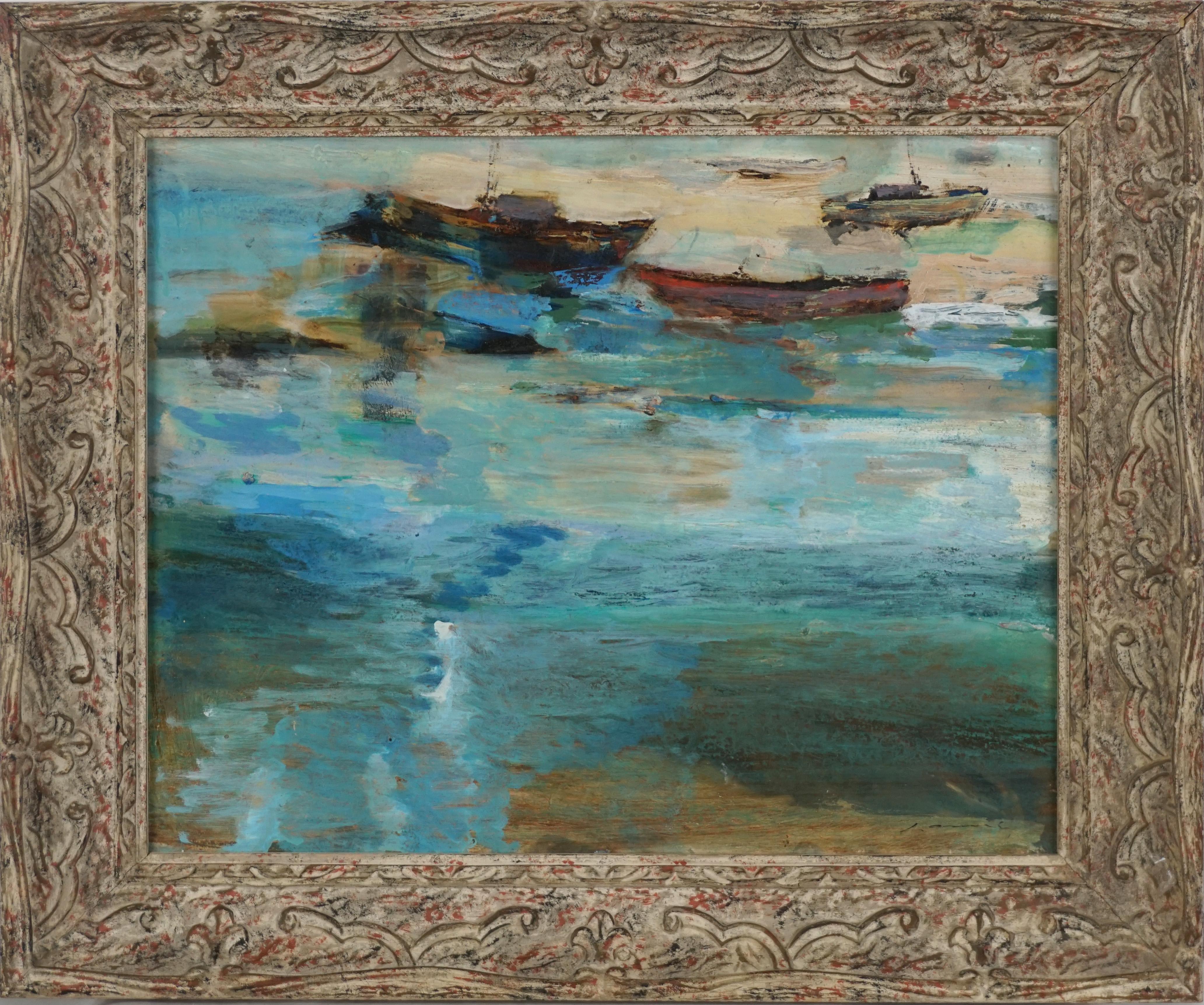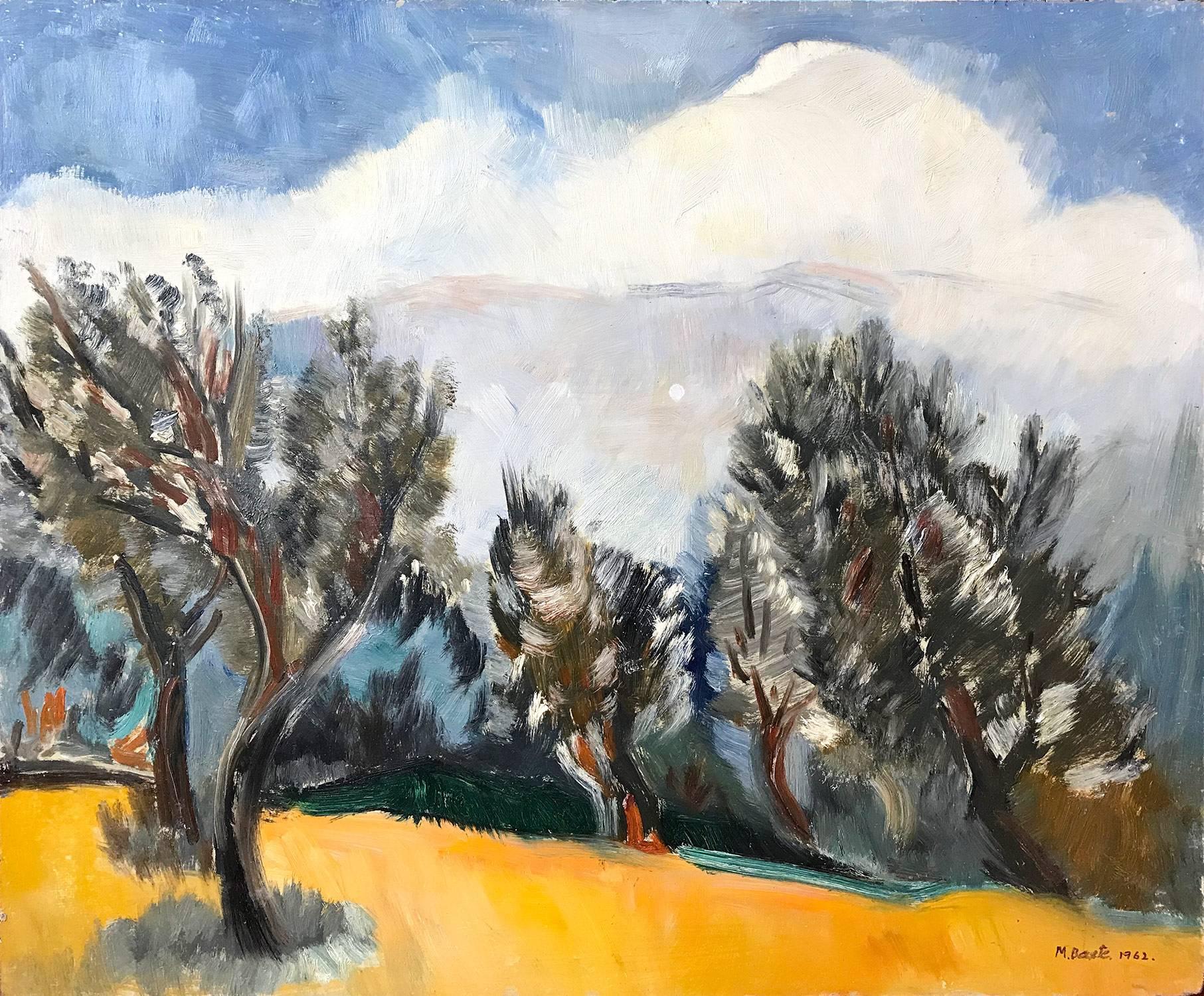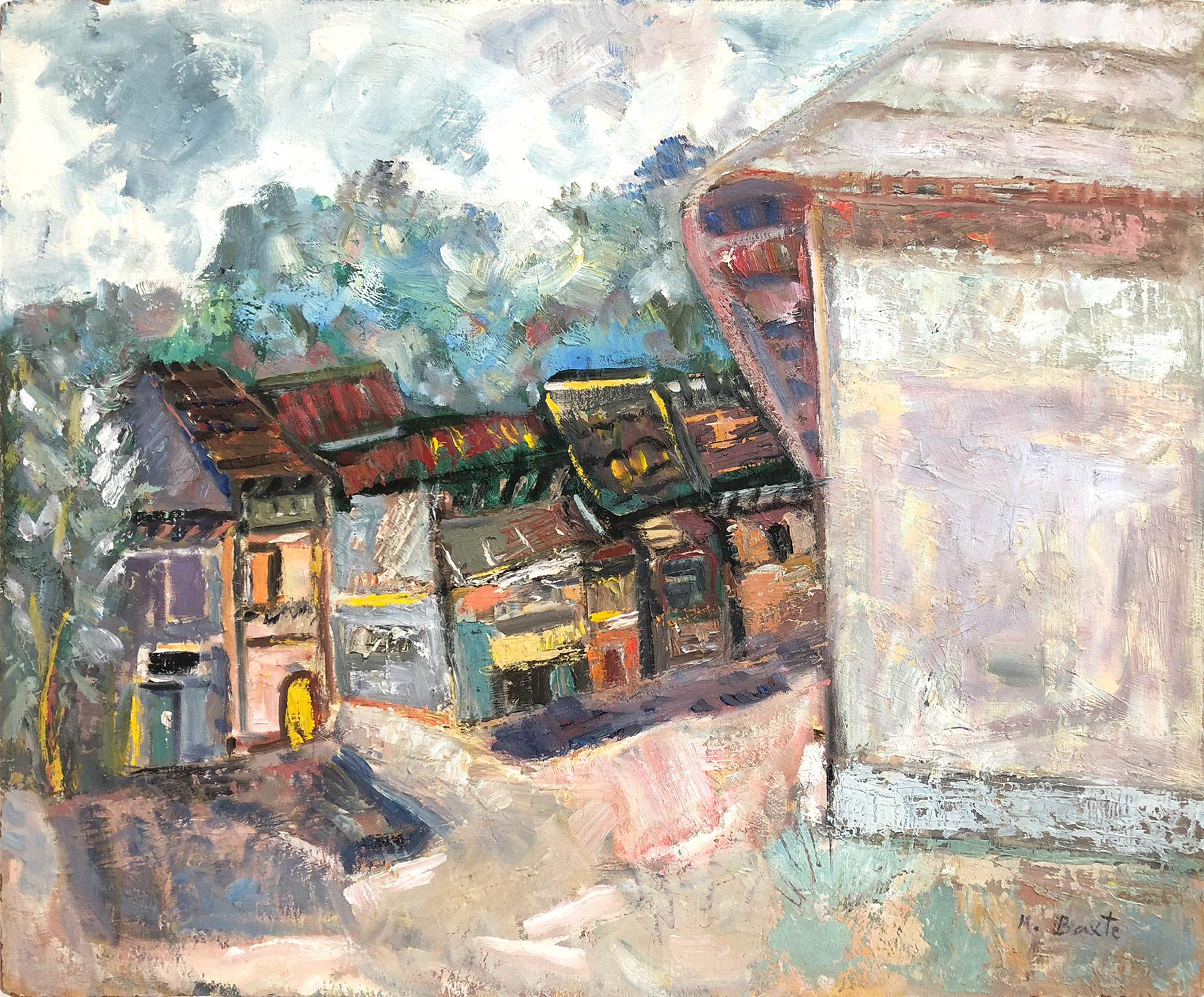Items Similar to Greenwich, CT Waterfront Estate 1984 by Stuart Hinrichs
Want more images or videos?
Request additional images or videos from the seller
1 of 17
Stuart HinrichsGreenwich, CT Waterfront Estate 1984 by Stuart Hinrichs1984
1984
About the Item
Delightful estate aerial rendering by society artist, Stuart Hinrichs of Greenwich, CT
Signed "Stuart" & dated July 7, '84
Art Sz: 13 1/2"H x 17 1/2"W
Frame Sz 15"H x 19"W
- Creator:Stuart Hinrichs
- Creation Year:1984
- Dimensions:Height: 15 in (38.1 cm)Width: 19 in (48.26 cm)
- Medium:
- Period:
- Condition:
- Gallery Location:Bristol, CT
- Reference Number:
About the Seller
4.7
Vetted Seller
These experienced sellers undergo a comprehensive evaluation by our team of in-house experts.
Established in 2000
1stDibs seller since 2019
98 sales on 1stDibs
Typical response time: <1 hour
- ShippingRetrieving quote...Ships From: Bristol, CT
- Return PolicyThis item cannot be returned.
More From This SellerView All
- "Miami Paradise" 1955 MONROE, JohnnyLocated in Bristol, CTAcrylic on board depicting two femme fatales lounging on lawn chairs by Johnny Monroe c1955 Art Sz: 11 3/4"H x 15 1/2"W Frame Sz: 15"H x 19"W w/ gilt bamboo frameCategory
1950s Landscape Paintings
MaterialsAcrylic, Board
- "Playa Pelada Costa Rica"' 2010 Oil On Canvas by F.A. CushingLocated in Bristol, CTOil on canvas of a beach scene at Playa Pelada, Costa Rica by Newport scion, FA 'Freddy' Cushing (1934-2013) signed & dated 2010 (LR) Provenance: The Isherwood Gallery in Newport, ...Category
2010s Other Art Style Landscape Paintings
MaterialsCanvas, Oil
- "Oakendale VA 1966 Oil On Canvas" by Julian BarrowBy Julian BarrowLocated in Bristol, CTOil on canvas, 1966, signed 'Julian Barrow' and dated lower right. Art Sz: 12"H x 16"W Frame Sz: 17"H x 21"W Provenance: The artist thence by descent The Estate of Mary S. B. Braga Artist Bio: Julian Barrow was known for his landscapes and paintings of country houses...Category
20th Century Landscape Paintings
MaterialsCanvas, Oil
- "Douglas & Mary Fairbanks Sr. Boxwood Farm Virginia Estate Oil On Board"Located in Bristol, CTArt Sz: 8 1/2"H x 11 1/2"W Frame Sz: 11 1/2"H x 14 1/2"W Artist: Miss Mary Munn Boxwood: Hot Springs, Bath Co, VA Boxwood Farm...where Mary “America’s Sweetheart” Pickford and Douglas Fairbanks, Sr. came to hide from the ever-watching eyes of the world. “The place was so seductive that I said I’d married the farm and Mary Lee came with it,” said Fairbanks in his autobiography. Huntington Hartford...Category
1930s Landscape Paintings
MaterialsOil
- "Yacht Club Boathouse" by G.V. WattsLocated in Bristol, CTClassic New England Yacht club boathouse scene Oil on canvas 1970s Art Sz: 17 1/2"H x 23 1/2"W Frame Sz: 21 1/2"H x 27 1/2"WCategory
Late 20th Century Other Art Style Landscape Paintings
MaterialsOil, Canvas
- Crane Neck Point, DuskLocated in Bristol, CTCharming pastel of Crane Neck Point, Old Field, NY by B.M. Kremitske signed BMK (LL) Image Sz: 3-5/8"H x 11-5/8"W Frame Sz: 6"H x 14"WCategory
Mid-20th Century Other Art Style Landscape Paintings
MaterialsWatercolor
You May Also Like
- 'Nymphs at Dusk', Art Nouveau, Arts and Crafts, Tonalist Oil, Three Graces, AICLocated in Santa Cruz, CASigned lower right, 'Emerson' for William C. Emerson (American, 1865-1937) and dated 1910. Original card board, verso, was additionally signed 'W. C. Emerson' and titled, 'The Dance' (images included were taken prior to lay down). Displayed in a period, carved and giltwood frame; framed dimensions: 27.75 x 33.75 x 1.5 inches. Born in London, England, William Emerson...Category
1910s Tonalist Landscape Paintings
MaterialsCardboard, Oil, Masonite
- 1940s Southwestern Figurative Landscape -- Pueblo Village New MexicoBy William FratesLocated in Soquel, CAGorgeous 1940s New Mexico village scene with small figures going about daily life among adobe buildings that are iconic of the Southwest, by William “Will” Frates (American, 1896-1969). Signed "Will FRATES" in the lower right corner. Titled "New Mexico Village" and Will Frates" on verso in pencil. Unframed. Image size: 24"H x 29.5"W. William Frates...Category
1940s American Impressionist Landscape Paintings
MaterialsOil, Fiberboard, Masonite
- Boats Near Shore - Abstracted SeascapeBy Robert CaneteLocated in Soquel, CAAbstracted seascape of three boats near the shore with broad, painterly strokes of blue, turquoise, and neutrals by Robert Canete (American, b. 1948). Signed lower right. Image: 6"H ...Category
1980s Abstract Expressionist Landscape Paintings
MaterialsMasonite, Oil
- "Mexican Countryside Landscape Mountain Scene with Trees" Expressionistic StyleBy Michael BaxteLocated in New York, NYA strong modernist oil painting depicted in 1962 by Russian painter Michael Baxte. Mostly known for his abstracted figures on canvas or street scenes, this piece is a wonderful repre...Category
1960s Expressionist Landscape Paintings
MaterialsMasonite, Oil
- "Landscape Scene of Mexican Villagers" Expressionistic Oil Painting on MasoniteBy Michael BaxteLocated in New York, NYA strong modernist oil painting depicted in 1971 by Russian painter Michael Baxte. Mostly known for his abstracted figures on canvas or street scenes, this piece is a wonderful representation of his landscape paintings, with expressive use of color, shape, and form. Later in his career, Baxte explores Expressionism, infusing both European and North American stylistic trends. This piece is from later in his career, but we can feel this underlying style throughout. Art measures 18 x 21.75 inches Michael Posner Baxte was born in 1890 in the small town of Staroselje Belarus, Russia. For the first half of the 19th century it was a center of the Chabad movement of Hasidic Jews, but this group was gone by the middle of the 19th century. By the time the Baxte family immigrated to the United States at the beginning of the 20th century, the Jewish population numbered only on the hundreds. The native language of the Baxte family was Yiddish. It is likely that the death of Michael Baxte’s father triggered the family’s immigration. Three older brothers arrived in New York between 1903 and 1905. Michael and his mother, Rebecca, arrived in 1907. By 1910 Michael, his mother, and brother, Joseph, were living in New Orleans and may have spent some time on a Louisiana plantation. Around 1912, Michael Baxte returned to Europe to study the violin. In 1914 he, his mother, and Joseph moved to New York City. Meanwhile, in Algeria, a talented young woman painter, Violette Mege, was making history. Since for the first time, a woman won the prestigious Beaux Art competition in Algeria. At first, the awards committee denied her the prize but, with French government intervention, Mege eventually prevailed. She won again 3 years later and, in 1916, used the scholarship to visit the United States of America. When Violette came to New York, she met Baxte, who was, by then, an accomplished violinist, teacher, and composer. Baxte’s compositions were performed at the Tokyo Imperial Theater, and in 1922 he was listed in the American Jewish Yearbook as one of the prominent members of the American Jewish community. As a music teacher he encouraged individual expression. Baxte stated, “No pupil should ever be forced into imitation of the teacher. Art is a personal experience, and the teacher’s truest aim must be to awaken this light of personality through the patient light of science.” By 1920 Michael Baxte and Violette Mege were living together in Manhattan. Although they claimed to be living as husband and wife, it seems that their marriage did not become official until 1928. On their “unofficial” honeymoon around 1917, in Algiers, Baxte confided to her his ambition to paint. There and later in New Mexico where the wonderful steeped sunlight approximates the coloring of Algiers, she taught him his heart’s desire. He never had any other teacher. She never had any other pupil. For ten years she devoted all her time, energy, and ambition to teaching, encouraging, inspiring him. Then in 1928, their mutual strivings were rewarded, as his works were being chosen as one of the two winners in the Dudensing National Competition for American Painters. Out of 150 artists from across the country participated in the Dudensing, and Michael Posner Baxte and, Robert Fawcett, were the winners. In his 1924 naturalization application, he indicated that he was sometimes known as “Michael Posner Baxte.” One of the witnesses to his application was Bernard Karfiol, a Jewish American artist. That’s when Michael may...Category
1960s Expressionist Landscape Paintings
MaterialsMasonite, Oil
- "Colorful Mexican Village Scene" Expressionistic Oil Painting on MasoniteBy Michael BaxteLocated in New York, NYA strong modernist oil painting depicted Circa 1960 by Russian painter Michael Baxte. Mostly known for his abstracted figures on canvas or street scenes, this piece is a wonderful representation of his bold still life paintings, with expressive use of color, shape, and form. Later in his career, Baxte explores Expressionism, infusing both European and North American stylistic trends. This piece is from later in his career, but we can feel this underlying style throughout. Art measures 18 x 21.75 inches Michael Posner Baxte was born in 1890 in the small town of Staroselje Belarus, Russia. For the first half of the 19th century it was a center of the Chabad movement of Hasidic Jews, but this group was gone by the middle of the 19th century. By the time the Baxte family immigrated to the United States at the beginning of the 20th century, the Jewish population numbered only on the hundreds. The native language of the Baxte family was Yiddish. It is likely that the death of Michael Baxte’s father triggered the family’s immigration. Three older brothers arrived in New York between 1903 and 1905. Michael and his mother, Rebecca, arrived in 1907. By 1910 Michael, his mother, and brother, Joseph, were living in New Orleans and may have spent some time on a Louisiana plantation. Around 1912, Michael Baxte returned to Europe to study the violin. In 1914 he, his mother, and Joseph moved to New York City. Meanwhile, in Algeria, a talented young woman painter, Violette Mege, was making history. Since for the first time, a woman won the prestigious Beaux Art competition in Algeria. At first, the awards committee denied her the prize but, with French government intervention, Mege eventually prevailed. She won again 3 years later and, in 1916, used the scholarship to visit the United States of America. When Violette came to New York, she met Baxte, who was, by then, an accomplished violinist, teacher, and composer. Baxte’s compositions were performed at the Tokyo Imperial Theater, and in 1922 he was listed in the American Jewish Yearbook as one of the prominent members of the American Jewish community. As a music teacher he encouraged individual expression. Baxte stated, “No pupil should ever be forced into imitation of the teacher. Art is a personal experience, and the teacher’s truest aim must be to awaken this light of personality through the patient light of science.” By 1920 Michael Baxte and Violette Mege were living together in Manhattan. Although they claimed to be living as husband and wife, it seems that their marriage did not become official until 1928. On their “unofficial” honeymoon around 1917, in Algiers, Baxte confided to her his ambition to paint. There and later in New Mexico where the wonderful steeped sunlight approximates the coloring of Algiers, she taught him his heart’s desire. He never had any other teacher. She never had any other pupil. For ten years she devoted all her time, energy, and ambition to teaching, encouraging, inspiring him. Then in 1928, their mutual strivings were rewarded, as his works were being chosen as one of the two winners in the Dudensing National Competition for American Painters. Out of 150 artists from across the country participated in the Dudensing, and Michael Posner Baxte and, Robert Fawcett, were the winners. In his 1924 naturalization application, he indicated that he was sometimes known as “Michael Posner Baxte.” One of the witnesses to his application was Bernard Karfiol, a Jewish American artist. That’s when Michael may...Category
1960s Expressionist Landscape Paintings
MaterialsMasonite, Oil





